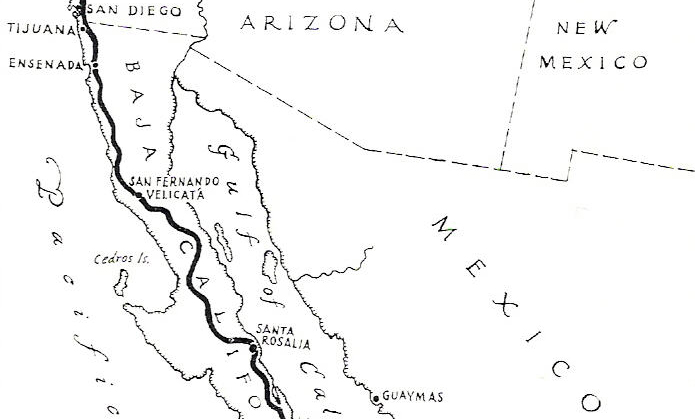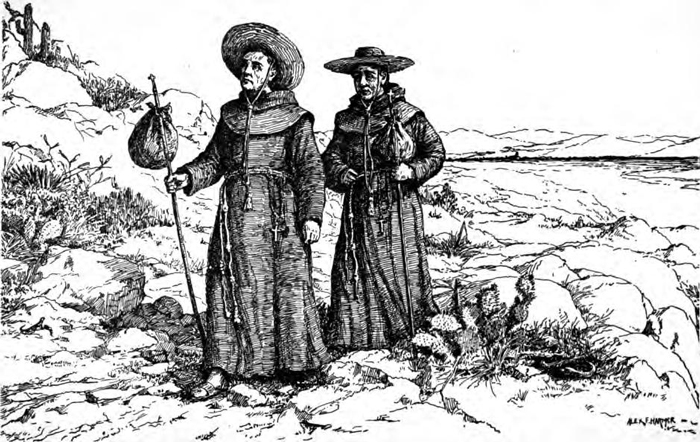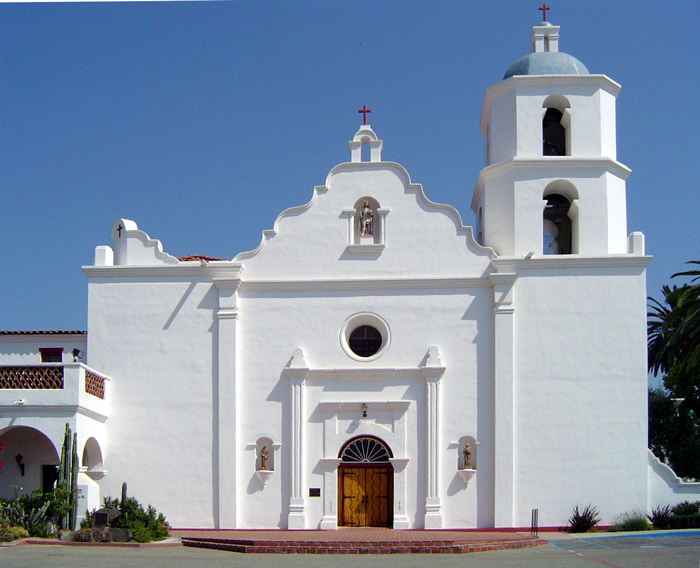|
El Camino Real Misionero de las Californias
in Route to be Included in the World Heritage Site List
August 2016
By Maria E Curry
 The overland route of Gaspar de Portolá and Father Junípero Serra from Loreto, Mexico to San Diego in 1769. Scanned from California from the Conquistadores to the Legends of Laguna. |
 Mulege Mission in Baja California Sur - The mission was founded in 1705 by the Jesuit missionary Juan Manuel de Basaldúa at a ranchería of the local Cochimí people known as Mulegé, on the eastern Baja California Peninsula, in Viceroyalty of New Spain. The site lies near the entrance of Bahía de Concepción, on the coast of the Gulf of California. Photo by Tomás Castelazo |
 Franciscans of the California missions wore gray habits, rather than the brown cassocks that are worn today. Taken from p. 20 of San Juan Capistrano Mission by Engelhardt, Zephyrin (1922). |
 The Mission of San Luis Rey de Francia in Oceanside was founded on June 13, 1798 by Padre Fermín Lasué�n, and was the eighteenth of the Spanish missions established in California. Named for Saint Louis, the mission lent its name to the Luiseño tribe of Mission Indians. Photo taken in 2005, courtesy wikipedia |
The U.S.-based California Missions Foundation (CMF) and the Mexican civil organization Corredor Histórico CAREM, A.C. are leading an international effort to nominate the heritage transportation corridor Camino Real Misionero de las Californias as a World Heritage Site. The route connects missions, ranches, Native American sites, pueblos, cities, historic monuments, and cultural landscapes from the Spanish and Mexican periods in the three Californias. It goes from California in the U.S. through Baja California and Baja California Sur in Mexico. A World Heritage Site is a place listed by UNESCO (United Nations Educational, Scientific, and Cultural Organization) for its outstanding cultural and/or natural significance. Of the 1,052 designated sites in 165 nations, Mexico has 34 and the United States, 23. UNESCO considers which sites to preserve based on the interests of the international community.
A historic transportation corridor is a route used by people to move individuals and families, goods and wares, and, in the process, humans altered the natural environment. A Canadian National Historic Sites and Parks official has described a historic transportation corridor as "a linear cultural landscape combining the natural and cultural environment."
El Camino Real Misionero connected all the missions cross-country, but it also had a maritime component because people constantly traveled by sea in this region, and the peninsula in Mexico was considered an island at that time. For more than 100 years, Jesuit, Franciscan, and Dominican priests settled various missions in the Californias as institutions that Spaniards used to colonize the region. The Mission sites represent the influence of the Spanish in the Cucapá, Pai Pai, Kiliwa, Kumiai, and Cochimí native groups.
In 1697, the first mission of Nuestra Señora de Loreto Conchó was established in Baja California Sur, and in 1823, the last, San Francisco de Solano, was built in Sonoma, California. The Spaniards travelled along this route transmitting their religion and culture to the natives, building missions and presidios, and promoting the growth of settlements. There are still natural landscapes with native vegetation, ecosystems and geographical features reminiscent of the period of cultural significance of this corridor. Many of the missions have been destroyed by the ravages of time, neglect, or intentional damage, but others have been preserved and are used as museums or churches.
CMF and CAREM continue working with government agencies and non-governmental organizations from both countries with the goal of nominating the cultural corridor to the World Heritage Site list. Some of the partners for this multiyear project include Mexico's Instituto Nacional de Antropología e Historia (INAH), US/ICOMOS, California State Parks, the National Park Service, the San Diego Maritime Museum, the Santa Barbara Trust for Historic Preservation, historical organizations, Native American groups, community members, and experts in various areas.
There are many transportation heritage corridors along Mexico and the United States that deserve recognition. Some of them have already been identified and studied by scholars and governmental institutions: Los Caminos del Rio, which runs through Texas and several Mexican northern states; El Camino Real de Tierra Adentro, which goes from New Mexico to Mexico City; and the San Diego and Arizona railroad that connects San Diego to El Centro in California and has a span in Mexico.
The benefits of designating El Camino Real Misionero de las Californias are numerous for landscape preservation and international cooperation. It can also be a way to engage and value living peoples and to preserve missions, trails, rock art and indigenous sites and traditions, as Julia Bendimez, regional director for INAH in the state of Baja California, states. The designation can help in the protection and accurate interpretation of the history of the cultural and natural resources along the route and a better understanding of our origins as migrants from Europe in the Californias. Last, but not least, it can help us prove that we are more than neighbors in this region. As Wayne Donaldson, chairman of CMF and a SOHO board member, states, we are familia.
|
2025
2024
2023
2022
2021
2020
2019
2018
2017
2016
2015
|







